BLEEDING STEEL: Has Jackie Chan Met His Match, A Bad Script?
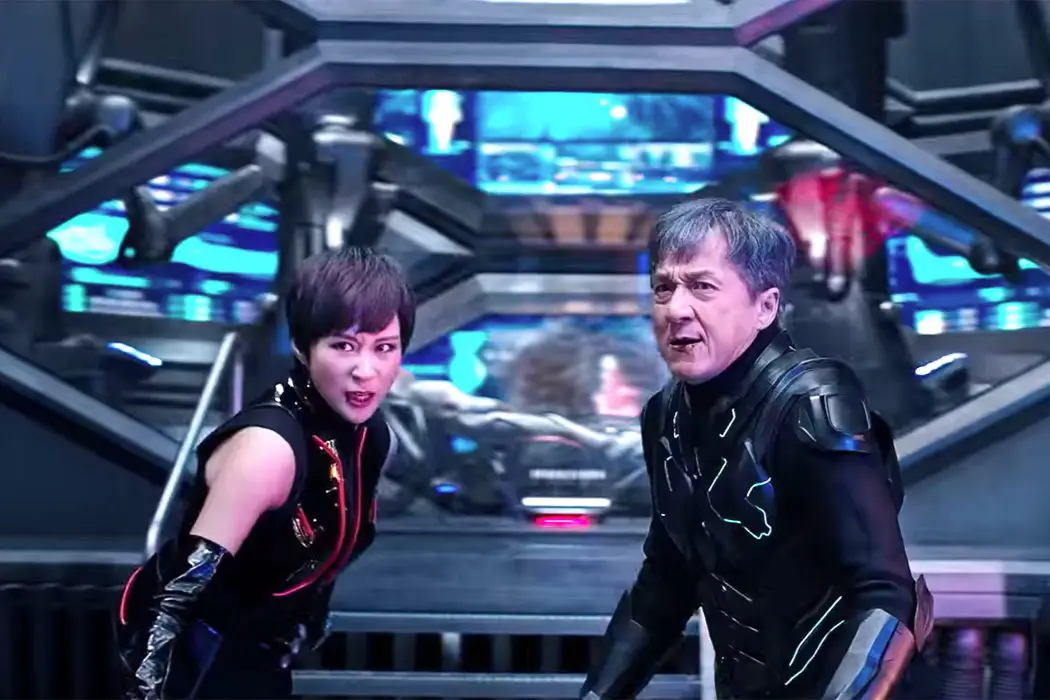
Frank H. Wu is William L. Prosser Distinguished Professor at…
Superstar Jackie Chan has another movie out, Bleeding Steel. That statement by itself is probably sufficient for any review. He plays himself in almost all his outings anyway, a martial arts expert who is equally humble and hilarious, a decent guy who would prefer not to confront various opponents inexplicably intent on harming him and much of society as well.
The formula has proven successful in his native Hong Kong and far beyond. This time the plot is impossible to summarize, and not because it has some sort of intricate internal logic — to the contrary, it embodies total chaos.
What is the Plot of this Movie?
The simplest description requires run-on sentences. Here goes. A scientist in Asia, a defector from an English-speaking nation, has invented a mechanical heart and artificial blood that enable humans to become “bioriod” cybernetic soldiers who regenerate instantly following injury. He implants and infuses these inventions into Lin Dong – Chan’s cancer-stricken daughter (Elena Cai) for safekeeping; thirteen years later, a novelist in Australia has written a best-selling book revealing the secret of the innovations.
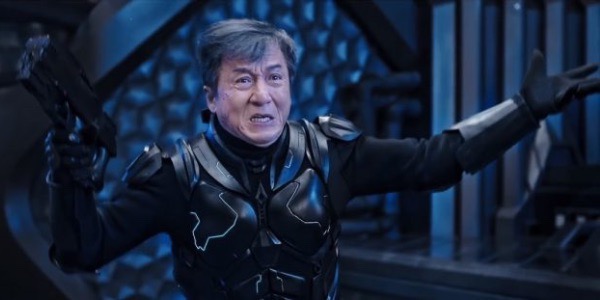
The villain, Andre (Callan Mulvey), who was engineered with an early version of the technology, which is defective since he has some sort of auto-immune disease, captures the daughter (now Nanan Ou-Yang), who was adopted and has been since youth plagued (by repressed memories of a lost childhood because partial amnesia is a side effect of the medical operation), in order to undergo a further transplant that will revive his powers. Much of this storyline is explicated in monologues that would fail an introductory screenwriting course.
There is so much insanity at this party, from circus performers to a spaceship nobody has noticed to the coincidence of another orphan being the sole surviving member of a family murdered by the villain to an attempted assassination by a perpetrator in drag to a self-referential coda that suggests a sequel is envisioned. The villain and his lieutenant, the Lady in Black (Tess Haubrich), look as if they have escaped from a Rocky Horror Picture Show convention, with the former putting on a costume from the Terminator franchise and the latter dressing up as Eva Green. It would be silly to expect any of it to make sense.
The dialogue has clichés such as “Go! Do not fail me again!” and howlers such as “Stop! Don’t kill the innocent people.”
Why Do We Love Jackie Chan?
None of that matters. The point of a Jackie Chan movie is Jackie Chan doing his own stunts and beating up bad guys. Although approaching senescence as an action figure, Chan proceeds as he has always done. His hero fights the Lady in Black atop the iconic Sydney Opera House. He rips the still pumping metal heart out of the chest of the suddenly mummified Andre.
The true fan not only looks for the signature after-the-credits behind-the-scenes footage of Chan at work but also listens for his singing. In this instance, he reprises the “Hero Story” tune used circa 1985 in Police Story (a note to those who rent video-on-demand: you might not receive access to the outtakes, a final disappointment).
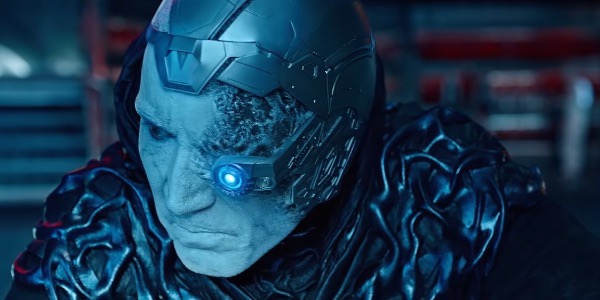
This movie suffers from abrupt transitions in tone and abrupt transitions in general. In describing these problems, it is difficult to determine if this entry in the genre should be taken as representative of Hong Kong action films or all action comedies – or if it’s inappropriate to treat it on terms other than its own.
The proceedings veer from melodrama to hardcore violence to comedy to hardcore violence. Alongside the lead villains are conventional racists (demonstrating that even the greeting “ni hao” can be transformed into a taunt) and would-be rapists, but they function, however incongruously, as slapstick caricatures. The Hong Kong aesthetic differs from Hollywood sensibilities. In fights, even those played for humor, more people bleed, each of them bleeds more, people die, and the deaths are more spectacular. Hong Kong cinema, like Japanese and South Korean counterparts, has its own conventions for how to depict brutality and cruelty and to what extent. Even family friendly fare can contain dismemberment by wuxia swordplay.
Perhaps for audiences accustomed to the mix of the brutal with the hilarious, the juxtaposition is less jarring. In the Elizabethan period, after all, people enjoyed animal bloodsports such as bear baiting, which often resulted in death of one of the creatures. Then they might be entertained by a Shakespeare “problem” play such as Merchant of Venice presenting anti-Semitism for laughs (with it, not at it).
Yet “chopsocky” movies (itself a vaguely derogatory term) often seem to suffer glitches of continuity, editing, and narrative flow. Some of this can be excused as what was “lost in translation” or cut for American audiences, but it also is no worse than would be exhibited by an American B-movie made with similar speed and in similar quantity. It is part of the charm.
How Did Jackie Chan Become Jackie Chan?
Chan’s development into a global brand unto himself is itself a story. All but completists likely have forgotten his inauspicious debut on these shores. Among his earliest Hollywood credits is the 1981 ensemble comedy The Cannonball Run.
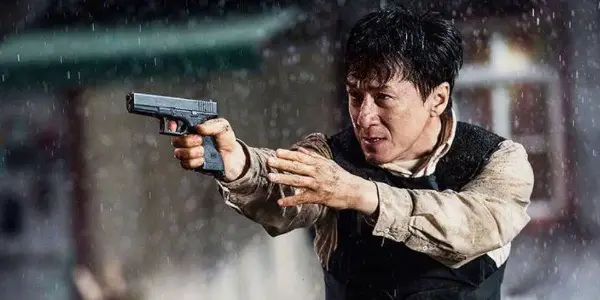
Starring Burt Reynolds, the top star of the era, the fictionalized account of a real road race across the American continent had Chan in a bit part as the Japanese driver of a rocket-powered Subaru — as they used to say, “you all look alike.” He and his engineer were always lost, despite having the most sophisticated vehicle among the competitors, perhaps because Chan’s character was constantly trying to use the navigation computer to watch pornography.
He was contractually obligated to appear in the sequel. He had a big scene at the center of a melee with a motorcycle gang. He was not the only ethnic caricature in the popular series. There were crude portrayals of Arabs, a parody of Italian Americans from The Godfather, and a pair of dim-witted Southern good ‘ole boys. But Chan was mocked off camera by his then more famous co-stars. He retreated to the Asian cinema once the production wrapped. He made it back to the American screens only after a decade had elapsed.
In 1995-96, he had a huge hit with Rumble in the Bronx. As protagonist Ma Hon Keung, a Hong Kong cop, he came stateside for the wedding of his uncle. In an immigrant multi-cultural touch, Chan’s relation, also Asian, is betrothed to an African-American woman, on the principle of “when in Rome . . .”.
Despite being dubbed in its entirety, since the star spoke his native Cantonese in the original version, and having significant portions eliminated altogether, the movie turned into the break out moment of Chan’s career. He was established as a bankable leading man within the American mainstream. His age was already the subject of comment by then. He had to slow down because he broke his ankle doing a stunt and could only mimic running by moving his arms while seated in a wheelchair. It would be churlish to deny him the admiration that is due.
His middle period culminated with buddy roles in franchises. Rush Hour (1998) paired him with African-American cop Chris Tucker. Shanghai Noon (2000) paired him with white outlaw Owen Wilson. He was also a solo act in underwear commercials. The label on his t-shirt irritates him so much he has to resort to kung fu to scratch himself as Michael Jordan looks on.
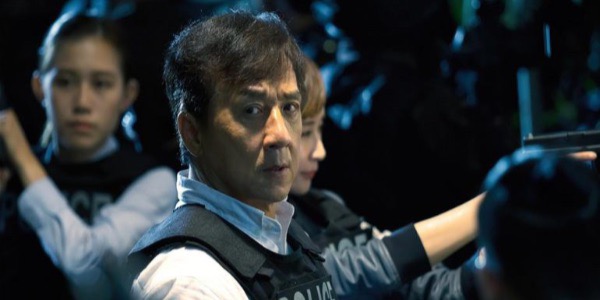
More recently, as the inevitability of eventual dotage chases him, Chan has offered a serious interpretation of a refugee in London — except this mild mannered Chinese Vietnamese restaurateur was once a US trained special ops soldier. The Foreigner (2017) offed his daughter in the opening scene, so he could pursue vengeance against adversaries who mistook him at face value as a takeout delivery man. He deals with Pierce Brosnan’s former Irish Republican Army operative, now sold out as the token Irish official in the government, as well as what remains of the IRA, still planting bombs. Somber and methodical even in the hand-to-hand combat, with only a hint of Chan’s signature over-the-top antics, the story could not have featured anyone else as the lead. It could have been a masterful coda.
Chan has not come lately to the genre as have other geriatric action stars such as Liam Neeson in Taken and Denzel Washington in The Equalizer. His only peer is Tom Cruise, who must have made a pact with the Devil for perpetual youthfulness, but Chan is consistently jokey, while Neeson and Washington do not break a smile as they go about grim business and Cruise has become more famous for his running than his smirk.
Bleeding Steel is not easy to review. It is recognizable as a Jackie Chan movie right down to the zaniness. There is not a good or a bad to it, because it cannot be taken so seriously. Maybe this title is to him as Moonraker was to James Bond, an extravagant attempt to imitate the futuristic settings of other box office fare of its time, which only highlighted the throwback quality of the central character. It’s a “jump the shark” moment.
As such, Bleeding Steel can be recommended for Jackie Chan. People who do not care for him already know who they are. People who like him will not be offended.
How does the Jackie Chan movie usually blend violence and humor so well? Can he keep doing it successfully? Tell us your thoughts in the comments below!
Bleeding Steel was released in the UK on December 22, 2017 and in the United States on July 6, 2018. For all international release dates, see here.
https://www.youtube.com/watch?v=hvsTHkImhxw
Does content like this matter to you?
Become a Member and support film journalism. Unlock access to all of Film Inquiry`s great articles. Join a community of like-minded readers who are passionate about cinema - get access to our private members Network, give back to independent filmmakers, and more.
Frank H. Wu is William L. Prosser Distinguished Professor at University of California Hastings College of the Law, where he has taught on film and law; he previously served as Chancellor & Dean at the institution. He has been published everywhere from the New York Times and Washington Post to the Chronicle of Higher Education and National Law Journal to Huffington Post, and he writes regularly about photography for 35mmc. He is a fan especially of 1970s paranoid thrillers.












